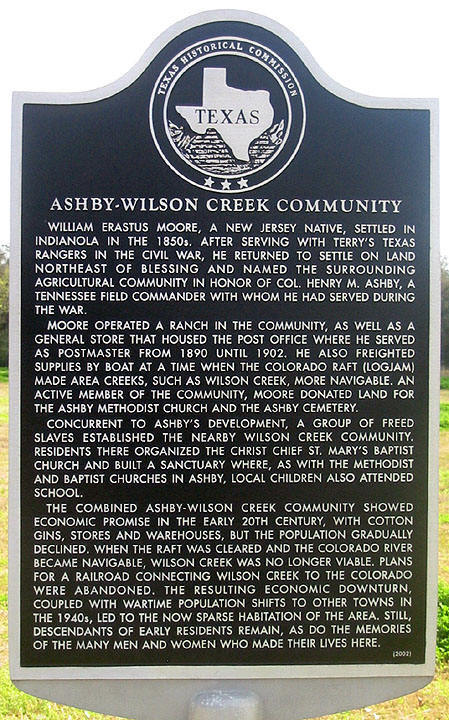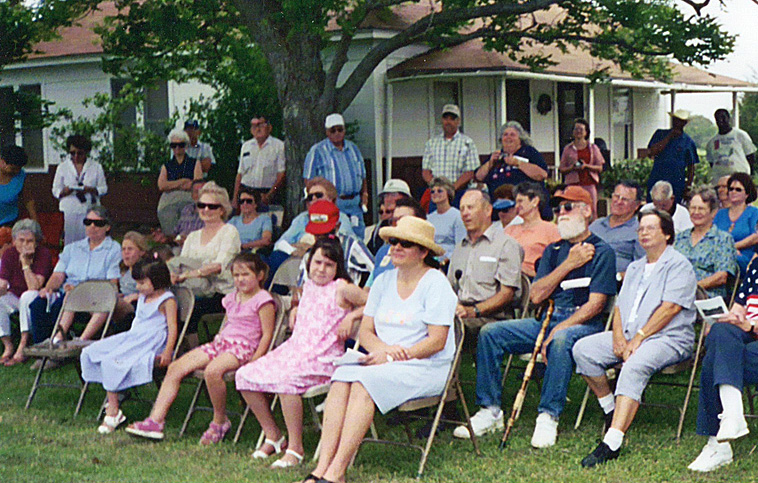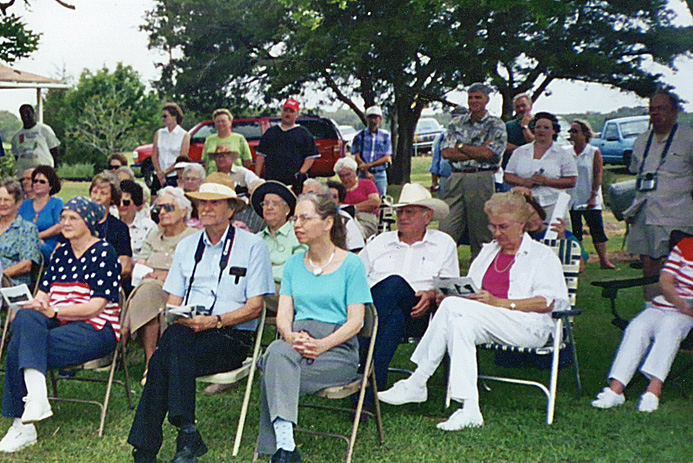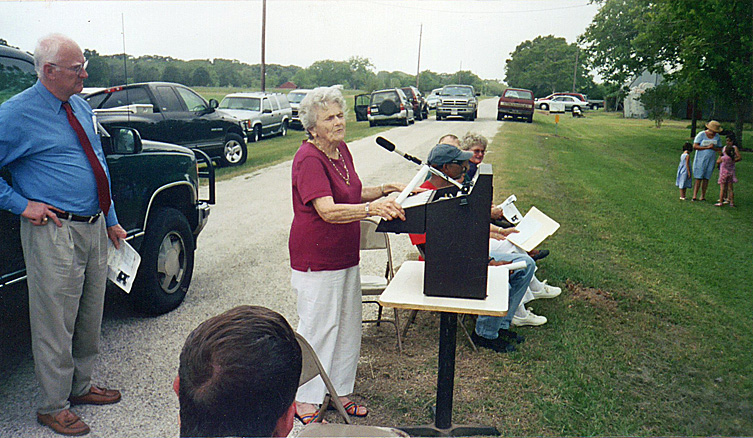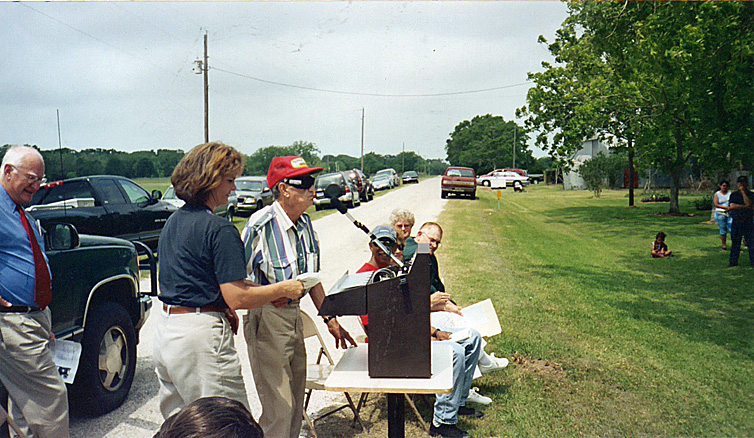|
ASHBY - WILSON CREEK COMMUNITY Compiled by Betty Rusk |
|||
|
|||
|
Ashby is located about five
miles south of SH 35 on FM 1095 in the G. J. Williams League. The area
later became known as the T. J. Williams Estate. T. J. Williams was a
descendant of Thomas Williams, who was one of Stephen F. Austin’s Old
Three Hundred. He first settled in The Ashby area was first inhabited by the cannibalistic Karankawa Indians who used it as a campsite in their constant search for firewood, food, and fresh water.
In the 1800s the population
growth was contributed to the deep, navigable
Captain W. E. Moore and his
wife joined the
The register of the Names of infants baptized were Ashby, Winifred and Gladys Moore; Martha and Blanche Downs (twins); T. E. and Frederick Cornelius; Addie Adair; Newberry Vaught; Martha Marker; Mary Logan; Marion and Wiley Kuykendall; Thomas J. Floyd; Malcolm, Ellen Jane, and Bertha Williams; Laura Phillips; Lee Owens; and Irma Dot and Ura Ruth Napper (twins). The following marriages are listed in the church register:
R. Y. Kuykendall & Maggie
Moore
E. D. Lunn & Sue Keller
T. J. Poole & Lizzie
Keller
J. P. Pierce & Louise
Keller
N. M. Vogelsang & Myrtle
Collins
S. S. Moore & Annie
McCamly
R. H. Whaley & J. J.
Calloway
C. Moore, M.D. & Maide
Dunbar
A
The old
There are two Williams family
cemeteries in the area. One is on land donated by John Williams. It is
still used and maintained by heirs. Another older
The community provided for
schools that were held in private homes, such as Mrs. Sterling
Landers’ home on
In 1911 a school teacherage
was erected about sixty yards from FM 1095 at the entrance of the
Due to the enthusiasm of Mrs.
Landers, a school building was erected behind the teacherage. This
building was later sold to Frank Kacer who moved it behind his home on Some of the early teachers were Eudora Moore, Era Trousdale, Katie Nicholson, Clara Ritchie, Mary Doss, and Tom Hale. Students of Ashby schools still have ancestors living in the area. Some of the pioneer names are Beiri, Vavra, Nicholson, Williams, Robertson, Spoor, Orsak, McKissick, and Vacek. During the mid 1890s, Captain Moore operated a general store at Ashby. Other businesses in the area were a rice and cotton warehouse, a barbershop, and a blacksmith shop. A two-story building owned by Thomas Gyle had a store on the first floor and the second floor served as a meeting place for the Woodmen of the World Insurance Company. A cottonseed compress was located on Compress Creek, now called Compress Gully. Captain W. Moore built a twelve-room house, “The Oaks”, to accommodate his large family.
Possibly the most popular
building at Ashby was the post office built in 1890 on Gyle land, now
known as the Dunbar Ranch. A second one was erected in 1912 on
Early postmasters were:
Most of the people were cotton
farmers or stock raisers. Rice was an important crop. Later, grain sorghum replaced rice as a major crop, but cotton remained king. Fruits and vegetables were grown and exported along with tallow and cowhides. Medical services were scarce in the county. An early doctor who attended the sick in Ashby was Dr. Flickwar who rode horseback from Blessing. He was kept busy during the flu epidemic in 1918. There was also a popular mid-wife in the area – an African-American woman, that every one called “Aunt Easter”. She delivered the eleven children of Thomas Williams.
Freed Blacks populated the
eastern side of the league as early as 1865. Their previous owners gave
them land and money to help them become independent. Later, in the
1890s, Antoine Jefferson Deadrick, a Frenchman who married Martha
Robinson (an African-American woman), contributed to the population
growth in Ashby by giving land to his people for a church/school. Chief
St. Mary’s
A cemetery was across Compress
Gully from St. Mary’s. The church has recently been moved by the
Matagorda County Historical Society across Compress Gully and sits next
to the
Several other African-American
cemeteries still exist in the community. One of the oldest contain two
graves and the markers read: Antwine Jefferson Died May 1944 and Sarah
Jefferson Died
The
An interesting picture of what
life in Ashby in the 1890s was like was told to Leon Hale, by W. H.
Hodges of
We came up hard. There were
ten of us children who lived in an old box house built by our father. If
we wanted meat, we just called the hog dogs and rounded up a bunch and
shot the one we wanted. If we needed money, we rode a mule ten miles and
sold eggs for ten cents a dozen. If we wanted beef, we would just go out
and find a calf and kill it. If we wanted milk, we roped a longhorn cow,
tied her down, and milked her. They were roaming all over the country
then.
The Ashby-Wilson Creek
Community Historical Marker Dedication was held |
|||
|
|
|||
|
|
|||
|
|
|||
|
|
